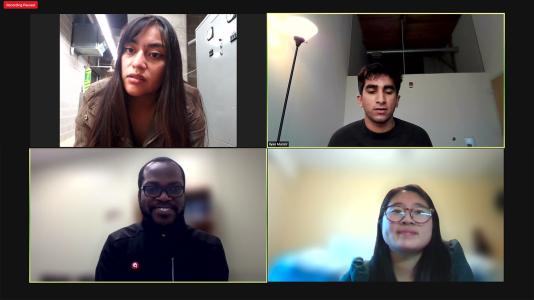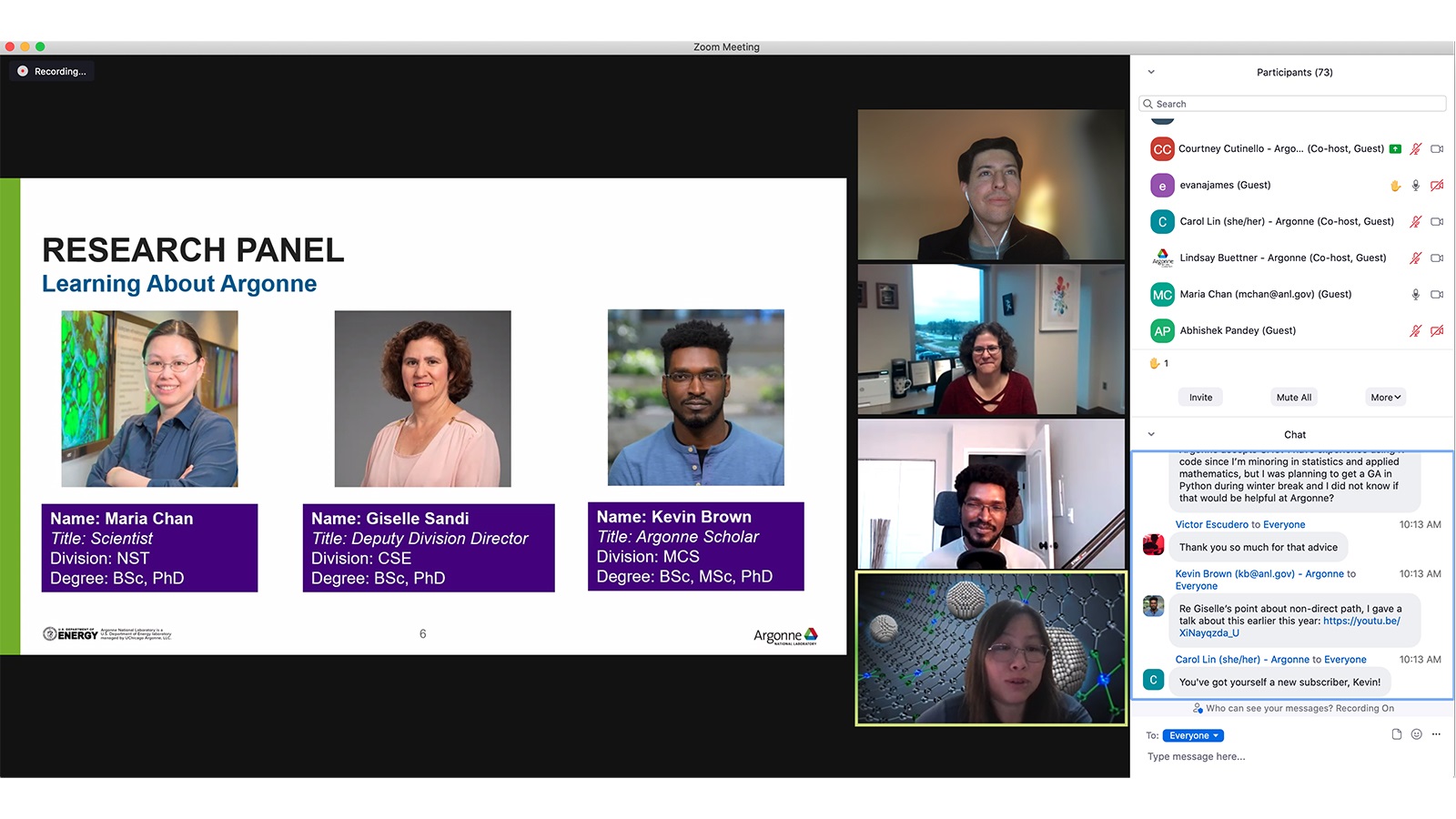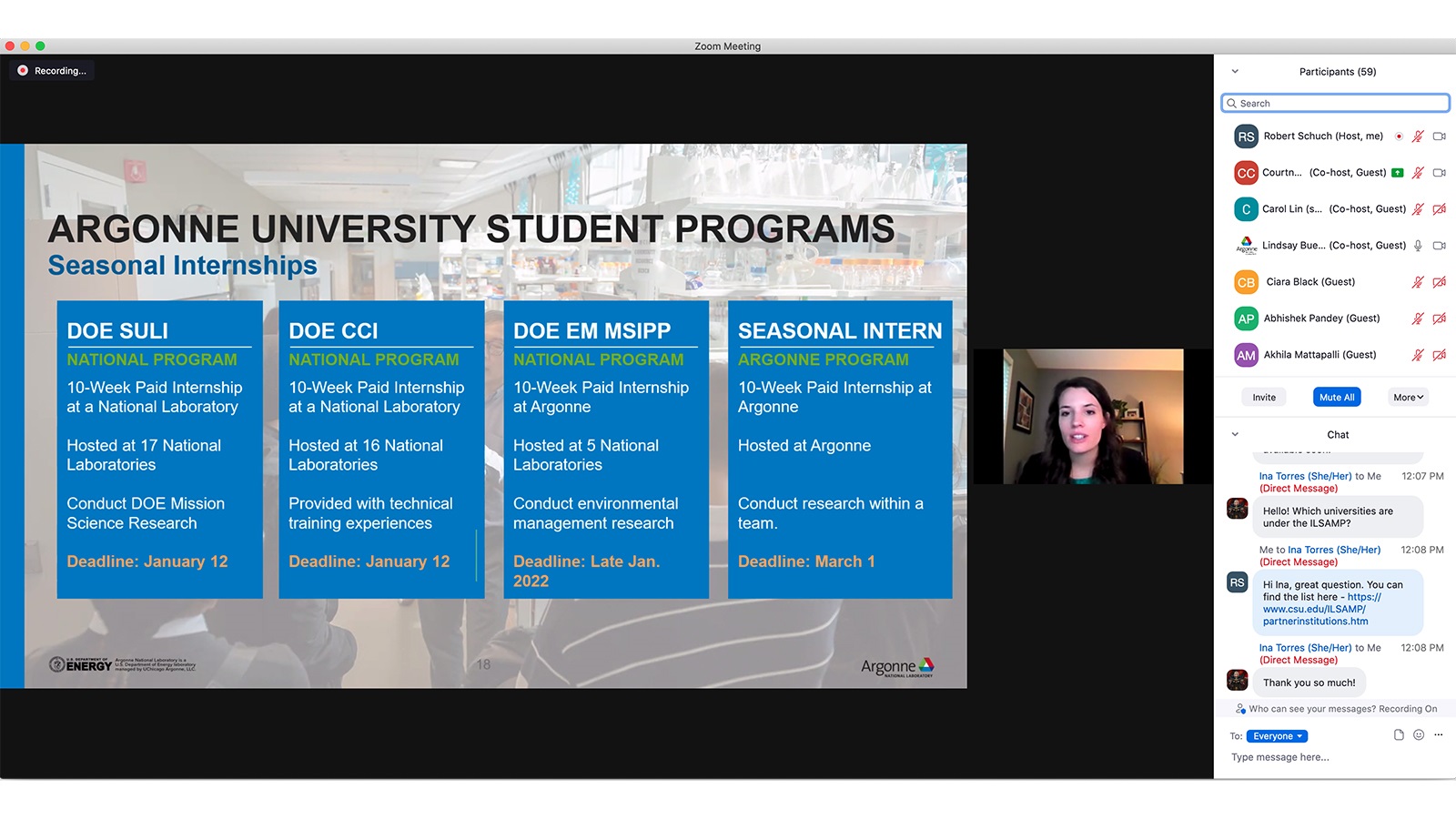
For students from underrepresented communities, access to premier scientific internships has not been easy to gain in the past. To rectify this problem and give some of America’s brightest students the opportunity to learn and discover alongside professional scientists, the U.S. Department of Energy’s (DOE) Argonne National Laboratory offers “First Look at Argonne.”
First offered on an annual basis in 2019, First Look is a unique program that connects students from underrepresented groups with scientists to introduce them to science, technology, engineering and mathematics (STEM) internship opportunities. “Many students don’t know that there are diverse STEM internship opportunities at national labs, or how to successfully apply to them,” said Argonne university student program coordinator Rob Schuch. “Through First Look, students get a great snapshot into our research and undergraduate programs across Argonne’s campus, and are able to take their first steps toward STEM internships. More than that, through this opportunity, they discover that national labs are a welcoming and exciting community to be part of.”
“First Look was my first impression of Argonne, and I loved it. After First Look, I started applying for internships at Argonne, and I’m really happy with my internship. You learn a lot from other interns, from your mentors, from the seminars — you just need to be ready to soak up all that knowledge.” — Marco Morales, former research aide for Physics department
In addition to a virtual tour of the Advanced Photon Source (APS), a U.S. Department of Energy Office of Science user facility at Argonne, and pointers on the intern application process, First Look featured a panel of Argonne researchers. Maria Chan, a scientist in Argonne’s Nanoscience and Technology division, shared her experience being discouraged from pursuing STEM as a child. “I was told repeatedly as a child that girls weren’t supposed to do science, so I appreciated the opportunity to pursue STEM,” she said. “Everyone deserves an opportunity to develop their talents and pursue their passions, so our efforts on diversity, equity and inclusion are very important.”
The researchers also emphasized that internships and mentorships are beneficial for national labs. “Finding mentors for students is something I enjoy tremendously,” said Giselle Sandi, the deputy division director for Argonne’s Chemical Sciences and Engineering division. “I always say, any investment we put into you is an investment in society and the Laboratory. We all, at our own level, contribute to Argonne’s scientific mission. You are the next generation of STEM researchers, and what you learn today will help you better understand where you could take your future career at Argonne and other national labs.”
During First Look, Argonne also hosted an “alumni” panel of three former Argonne interns, two of whom were past attendees of First Look. “First Look was my first impression of Argonne, and I loved it,” said Marco Morales, who helped develop an autonomous retriever device for the Physics division as a research aide. “After First Look, I started applying for internships at Argonne, and I’m really happy with my internship. You learn a lot from other interns, from your mentors, from the seminars — you just need to be ready to soak up all that knowledge.”
The alumni encouraged students to apply for STEM internships and offered key advice. “The willingness to learn and a passion for STEM will go a long way in your application and in your internship,” said Sneha Nachimuthu, who previously attended First Look and interned in the Science Undergraduate Laboratory Internship (SULI) program with the Environmental Science division. “You’re exposed to so much over your internship — both research and people — and you get to immerse yourself in the research experience. By the end of the internship, you really grow close to the people you’re in contact with.”
Like the interns on the alumni panel, the students of this year’s First Look were inspired by the experience. “I learned that it doesn’t matter if you don’t have all the [STEM] skills right now,” said University of Illinois at Chicago student Ilyas Munzir. “If you are motivated and willing to learn, you can succeed in an internship and make an impact in the world.”
About the Advanced Photon Source
The U. S. Department of Energy Office of Science’s Advanced Photon Source (APS) at Argonne National Laboratory is one of the world’s most productive X-ray light source facilities. The APS provides high-brightness X-ray beams to a diverse community of researchers in materials science, chemistry, condensed matter physics, the life and environmental sciences, and applied research. These X-rays are ideally suited for explorations of materials and biological structures; elemental distribution; chemical, magnetic, electronic states; and a wide range of technologically important engineering systems from batteries to fuel injector sprays, all of which are the foundations of our nation’s economic, technological, and physical well-being. Each year, more than 5,000 researchers use the APS to produce over 2,000 publications detailing impactful discoveries, and solve more vital biological protein structures than users of any other X-ray light source research facility. APS scientists and engineers innovate technology that is at the heart of advancing accelerator and light-source operations. This includes the insertion devices that produce extreme-brightness X-rays prized by researchers, lenses that focus the X-rays down to a few nanometers, instrumentation that maximizes the way the X-rays interact with samples being studied, and software that gathers and manages the massive quantity of data resulting from discovery research at the APS.
This research used resources of the Advanced Photon Source, a U.S. DOE Office of Science User Facility operated for the DOE Office of Science by Argonne National Laboratory under Contract No. DE-AC02-06CH11357.
Argonne National Laboratory seeks solutions to pressing national problems in science and technology. The nation’s first national laboratory, Argonne conducts leading-edge basic and applied scientific research in virtually every scientific discipline. Argonne researchers work closely with researchers from hundreds of companies, universities, and federal, state and municipal agencies to help them solve their specific problems, advance America’s scientific leadership and prepare the nation for a better future. With employees from more than 60 nations, Argonne is managed by UChicago Argonne, LLC for the U.S. Department of Energy’s Office of Science.
The U.S. Department of Energy’s Office of Science is the single largest supporter of basic research in the physical sciences in the United States and is working to address some of the most pressing challenges of our time. For more information, visit https://energy.gov/science.

